Guidelines for Light Commercial Vehicles
Fair Wear & Tear

Better with every move.


Better with every move.
DEKRA is one of the world’s leading expert organisations: the company currently operates in 50 countries and more than 29,000 employees are committed to ensuring long-term safety, quality and environmental protection. The DEKRA Business Units “Automotive”, “Industrial” and “Personnel” provide professional and innovative services in the fields of inspections, expert appraisals, claims management, consulting, certification, industrial and product testing. DEKRA Automotive Solutions, Service Unit of DEKRA Group company and key component of DEKRA Automotive business unit, is an international organisation with specialist skills in defleet and remarketing management of used vehicles. It has extensive experience in delivering bespoke used vehicle management solutions to the automotive motor industry as well as rental and leasing companies. www.dekra.com
Ayvens adopts a professional approach in respect of the end-of-lease return process.We offer both our leasing and remarketing customers a service that is fully independent, fair and transparent. We have created minimum standards in relation to the expected condition of each returned lease vehicle.
These standards are widely known as fair wear & tear and are comprehensively detailed in our Fair Wear & Tear Guidelines.
Following its return to Ayvens each vehicle will undergo a detailed inspection in relation to its interior and exterior condition. In order to maintain independence Ayvens has engaged the services of DEKRA Automotive Solutions to carry out these inspections. The company is a market leader in the area of vehicle inspection and verification and provides an inspection that is evaluated using manufacturer data. For every vehicle a condition and appraisal report is produced. These are made available to our leasing customers and our used vehicle buyers.
It’s said a picture is worth a thousand words, so to make it easier for you to understand fair wear and tear, you’ll find images of what is – and what is not – acceptable throughout this guide.
Naturally, it is a challenge to cover every single form of damage that could occur. But by the time you’ve finished this guide, you’ll have an excellent idea of the minimum standard expected for returned vehicles.
Please note that the assessment of fair wear and tear is generally dependent upon the age and mileage of the vehicle under inspection. Certain breakages and damage however are not acceptable, regardless of age and mileage, and these, amongst others, include missing items or broken glass, accident and impact damage. In all cases, we will endeavour to assess damage recharges fairly, charging on a repair rather than replacement basis, here possible.
When our independent partners complete their inspection they will prepare a condition report which identifies any damage on the vehicle outside the acceptance of fair wear and tear. This report will also detail the repair method and cost of repair. An appraisal report is prepared for our used vehicle buyers.

Basically, everything that you were given with the vehicle when it was delivered to you must be returned with the vehicle.
This includes, but is not limited to:
• All sets of keys, including master and spare keys
• All original documents such as the owner’s manual etc.
• Evidence of the signed/stamped service history
• Valid MOT certificate (if applicable)
• Radio code cards
• SDs, CDs or DVDs for satellite navigation (delet stored locations for security, such as your home address)
• All removable audio equipment (such as ‘face off’ units)
• All optional equipment fitted to the vehicle that is not a permanent fixture (tow bars, rear door sun shades etc.)
• All emergency equipment supplied with the vehicle (jack, wheel brace, warning triangle, first aid kid etc.)
• The spare wheel must be on-board and meet legal requirements
• In case your vehicle has a ‘tyre mobility set’, it must be in a working condition (sealing compound and a 12v compressor that plugs into the cigarette lighter)
• The original wheel caps

Remove all personal items
Please also remember to remove all personal effects from your vehicle prior to its return such as:
• Music CDs
• Road maps
• Sunglasses
• Fuel cards
Remember to check all storage areas in your vehicle, including the boot, glove box, door pockets, seat back pockets and all other storage spaces. We are unable to return personal effects left in the vehicle after the vehicle has been collected.
To avoid any unforeseen damage charges, there are a few things you can do before your vehicle is collected and taken away for appraisal.
Use this guide in full: Use this guide to look around the vehicle and make notes of any visible damages that you may spot. Your own re-collection inspection helps you to understand specifically what damage there is on the vehicle and helps avoid any surprises in terms of unexpected costs.
Ensure your vehicle is clean inside and out:
When you inspect your vehicle and, also importantly, on the day of collection, ensure the vehicle is in a clean condition inside and out. If your car is dirty, it makes it more difficult to spot and make note of any damage
Inspect your vehicle in natural daylight:
Park your vehicle in good natural daylight, avoiding shadow cover from trees etc. This will help you spot any dents or scratches that may otherwise be difficult to see.
Inspect your vehicle when it is dry:
A wet car will make it much harder for you to spot and make note of any scratches and dents. If the car has just been washed, or it has been raining, make sure it’s dried thoroughly before inspection..
You are more likely to spot dents if you look down a vehicle’s panel in profile (side on), rather than looking head on. Also, view the vehicle from different angles.
Inspect all panels:
Don’t forget to inspect the lamps, windscreen and mirrors, and the less obvious panels of a vehicle, such as the roof or those below bumper height.
Inspect and appraise your vehicle as objectively as you can, using the tips above. Consider asking a friend or colleague to help you.
The fair wear & tear appraisal also includes the inspection of tyres. If winter tyres were included inthe service agreement, the complete set of 4 wheels, including rims and bolts, must be returned. If a vehicle is returned during winter, the same applies for the summer tyres. Please refer to your local Ayvens contract for the specific agreements regarding the method of returning winter & summer tyres.
Many manufacturers no longer include a spare wheel and instead equip their cars with a so-called “Tyre Mobility Set” consisting of a sealing compound and an air compressor (12 Volt). If your car is equipped with a Tyre Mobility Set, then it must be on-board and in a working condition, when the car is returned. In case the vehicle was supplied with a spare wheel, it is mandatory that the spare wheel must be on-board when the car is returned.
Advertising stickers, sign writing, decals (including glue residue), regardless of size or condition, can have an impact on resale value of the vehicle. As a result, they must be completely and cleanly removed prior to selling the vehicle, regardless of whether they are on the bodywork or glass area. Any costs incurred by Ayvens for the removal of the above will be recharged. Please refer to your local Ayvens contract for the specific agreements regarding the method of returning in relation to stickers.
Unpleasant smells and/or stains in the vehicles’ interior can affect a returned vehicle’s used value. You may therefore feel it is necessary to have your vehicle completely cleaned using a professional cleaning company before it is returned.
• Chips and scratches up to 10 cm, provided that they can be removed by mechanical polishing
• Scuffs and abrasions up to 2 cm, provided that they can be removed by mechanical polishing
• Dents up to 2 cm, given that there are no more than two dents per panel
• Areas of stone chipping, given that less than 25% of the panel is affected, and no corrosion has developed
• Chips that have properly been touched up prior to corrosion development
• Scratches that will polish out, but are longer than 10 cm
• Any chips, scratches, scuffs and brasions, not possible to be removed via mechanical polishing
• Dents, scuffs and abrasions larger than 2 cm
• More than two dents per panel
• (Stone) chipping, covering more than 25% of the panel
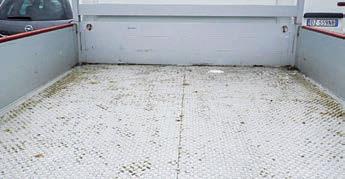

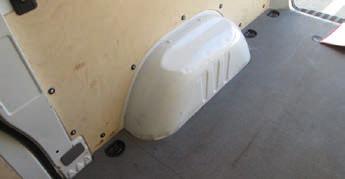



• Incorrect repaint work, showing a colour difference
• Incorrect repair work
• Corrosion development on any type of damage
• Paint discolouration through external impacts, such as incorrect chemical usage


• Scuffing, scratches or abrasions on sills of the loading compartment, providing that this has not affected the function of the bumpers, lights etc.
• Abrasions on the sills of back or side doors of the loading compartments providing that this has not affected the function of the doors
• Damage which has deformed the sill
• Scuffing, scratches or abrasions on sills of the loading compartment, affecting the function of the bumpers, lights etc.
• Abrasions on the sills of back or side doors of the loading compartments, affecting the function of the doors
• Damaged door seals

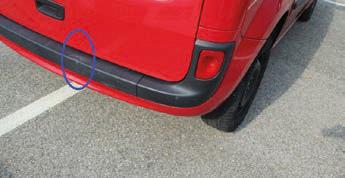





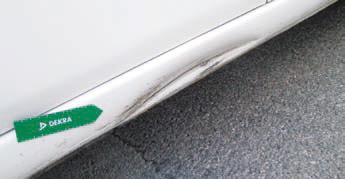
• Any chips, scratches, scuffs and brasions up to 10 cm, which may be removed by mechanical polishing
• Dents up to 2 cm, given that there are no more than two dents per panel
• Small areas of stone chipping, given that less than 25% of the panel is affected and they are corrosion free
• Chips that have properly been touched up prior to corrosion development
• Scratches, scuffs and abrasions that will polish out, but are longer than 10 cm
• Any chips, scratches, scuffs and abrasions, not possible to be removed by mechanical polishing
• Dents larger than 2 cm
• More than two dents per panel
• Corrosion development on any type of damage
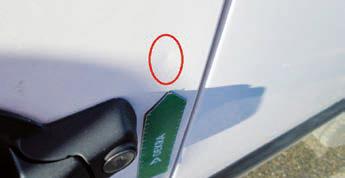





• (Stone) chipping, covering more than 25% of the panel
• Incorrect repaint work, showing a colour difference
• Incorrect repair work
• Paint discolouration through external impacts,


• Any scratches, scuffs and abrasions up to 10 cm, which may be removed by mechanical polishing
• For textured or non-painted bumpers, scuffing, scratches and scores up to 10 cm are acceptable
• Dents up to 2 cm, with a maximum of 2 dents per bumper or grille
• Discolour through external impacts, e.g. weather condition
• Broken, cracked or deformed grilles and bumpers
• Any chips, scratches, scuffs and abrasions, which will polish out, but are longer than 10 cm
• For painted bumpers: any chips, scratches, scuffs and abrasions, not possible to be removed by mechanical polishing






• Dents larger than 2 cm
• More than two dents per grille or bumper
• Damage due to incorrect usage


• Tyres with a minimum tread of 1.6 mm or tyre treads that meet local legal requirements
• On the face of the wheel trim, rim or alloy: one scratch, scuff or abrasion up to 10 cm
• On the border of the wheel trim, rim or alloy: one scratch, scuff or abrasion up to 10 cm
• Scratches, scuffs or abrasions larger than 10 cm
• Deformed tyres, e.g. caused by kerbing
• Bulges, cracks or cuts to the tyres
• Damage to the sidewalls or tread
• Tyres penetrated with a foreign object
• Broken or deformed wheel trim, rim or alloy
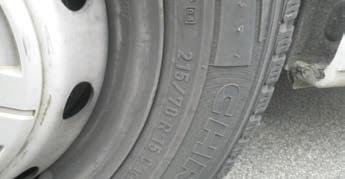





• Corrosion development on the wheel trim, rim or alloy
• Returns without the original wheel caps, tyre mobility kit and/or spare wheel


• Stone chipping, provided that they are no larger than 1 cm and not in the A Zone of the windscreen
• Stone chipping on the surface of headlights, fog lights or indicators not breaking the glass and not harming its function
• Small stickers on the glass required by local legislation
• Broken glass or lights
• Cracks or chips in the lights, which restrict the function of the light. All bulbs should be operational
• Self-applied sun protection or tinted strips must be completely removed from the windscreen if they have not been professionally applied, are torn, or have begun to separate from the corners of the windscreen






• Chips or cracks larger than 1 cm
• Chips smaller than 1 cm in the A zone of the windscreen
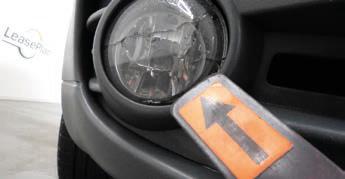

• Scuffing, scratches and scores up to 5 cm
• Returning a vehicle with intact tow bars and pins
• Fitted beacons or lights that are properly fitted and in full working condition, without any damage. The lights must fully comply with the legal requirements, and if required by local law, mentioned in the vehicle documents


• Added antennas or roof fittings must be fully functional and comply with the road safety as well as be approved for the type of vehicle
• In case of removal of external fittings, the affected area’s need to be properly repaired
• Scuffing, scratches and scores larger than 5 cm
• Deformation of the mirror and/or mirror case
• Beacons that have damaged the structure of the vehicle through their fitment or removal
• Damaged, broken





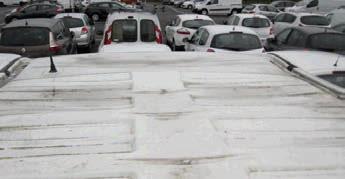
• Soiling and stains on seats, interior lining, floor mats or carpets, which can be removed by general cleaning
• Seats showing wear and indentation through general usage
• Panel discolouration through day to day usage and wear
• Phone fittings/cradles may be left in the vehicle
• Soiling and stains on seats, interior lining, floor mats or carpets, which can not be removed by general cleaning, but require specialist cleaning
• Cuts, abrasions, tears and damage to the material of the interior lining, carpets and floor mats
• Holes left in the console as a result of equipment removal

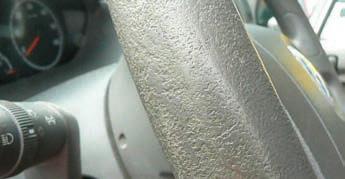
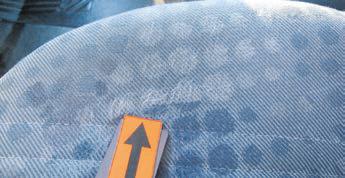



• Cuts, gouges or loose threads on the steering wheel
• Unpleasant odours which require specialist cleaning to remove
• Returning the vehicle with seats missing


ayvens.gr